What Instrument Would My Child Enjoy?
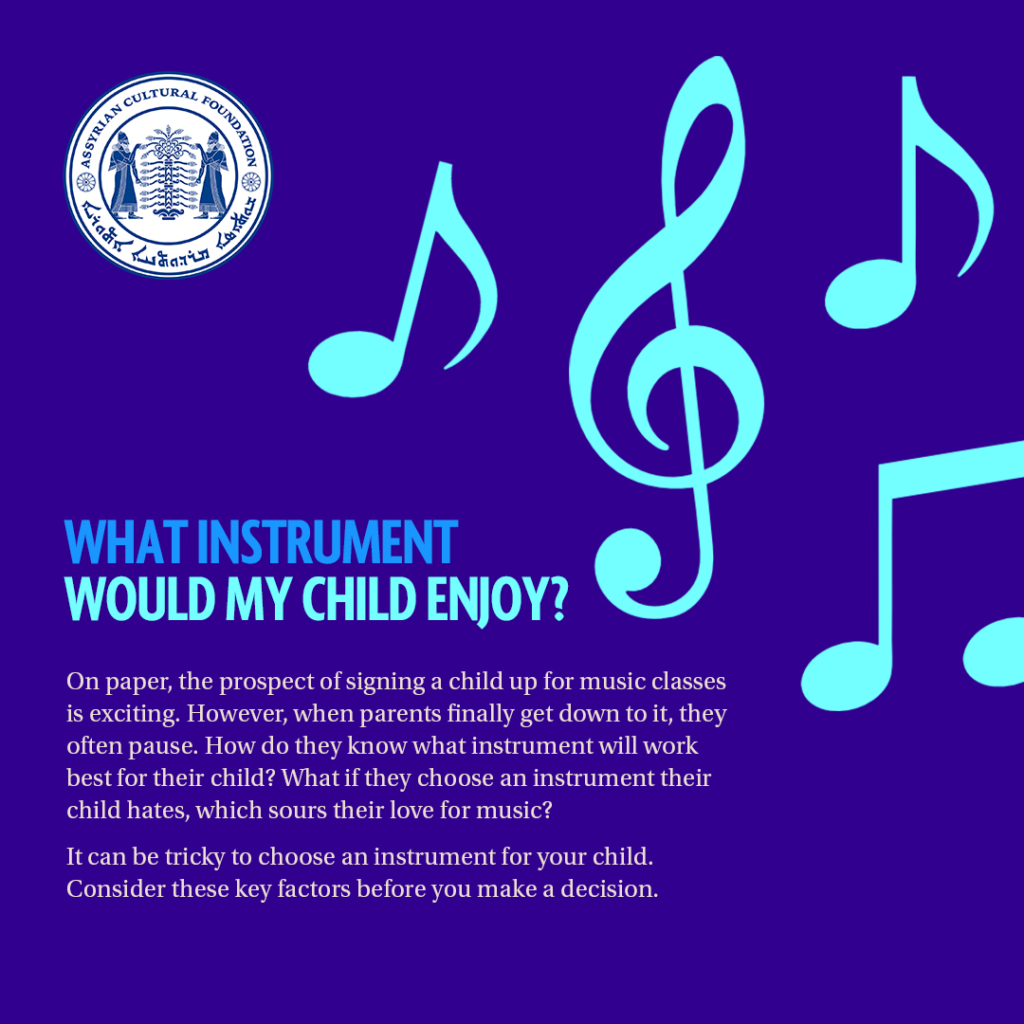
What Instrument Would My Child Enjoy?
On paper, the prospect of signing a child up for music classes is exciting. However, when parents finally get down to it, they often pause. How do they know what instrument will work best for their child? What if they choose an instrument their child hates, which sours their love for music?
It can be tricky to choose an instrument for your child. Consider these key factors before you make a decision.
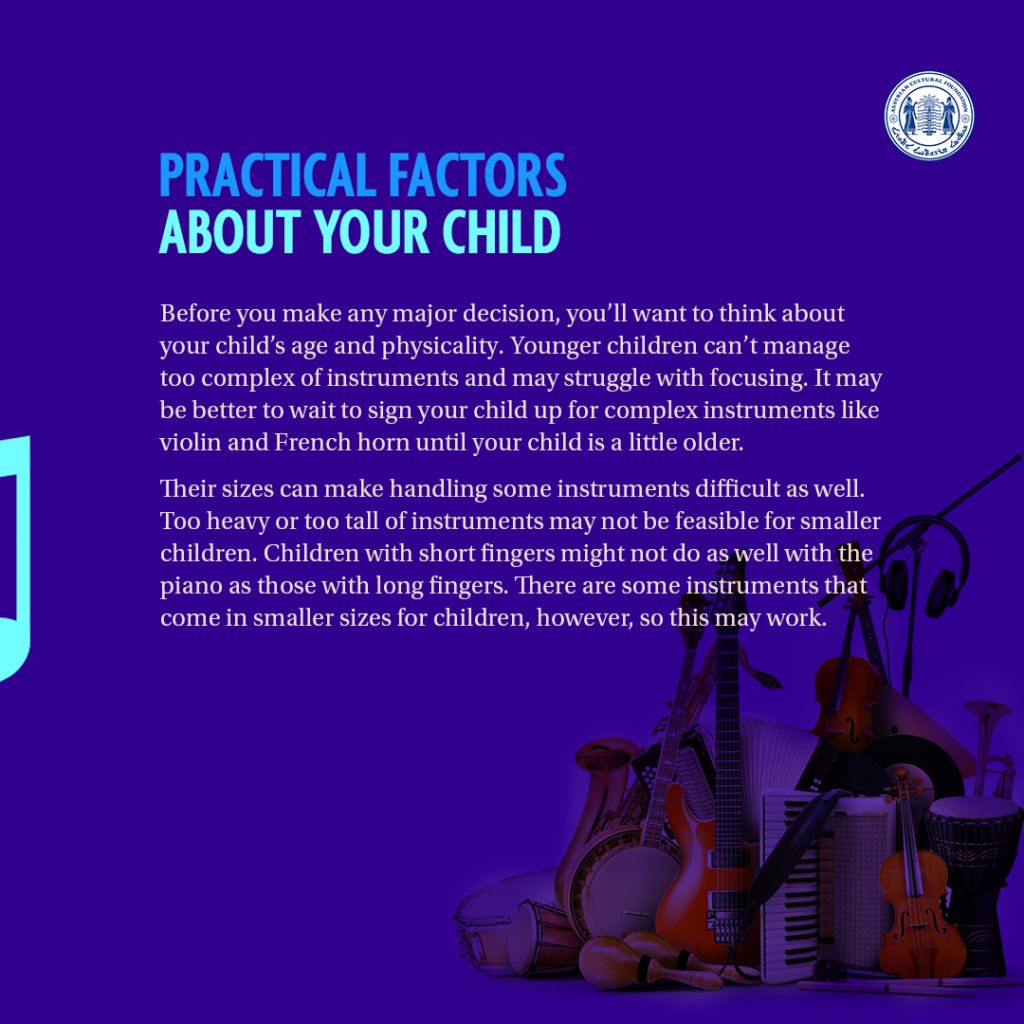
Practical factors about your child
Before you make any major decision, you’ll want to think about your child’s age and physicality. Younger children can’t manage too complex of instruments and may struggle with focusing. It may be better to wait to sign your child up for complex instruments like violin and French horn until your child is a little older.
Their sizes can make handling some instruments difficult as well. Too heavy or too tall of instruments may not be feasible for smaller children. Children with short fingers might not do as well with the piano as those with long fingers. There are some instruments that come in smaller sizes for children, however, so this may work.
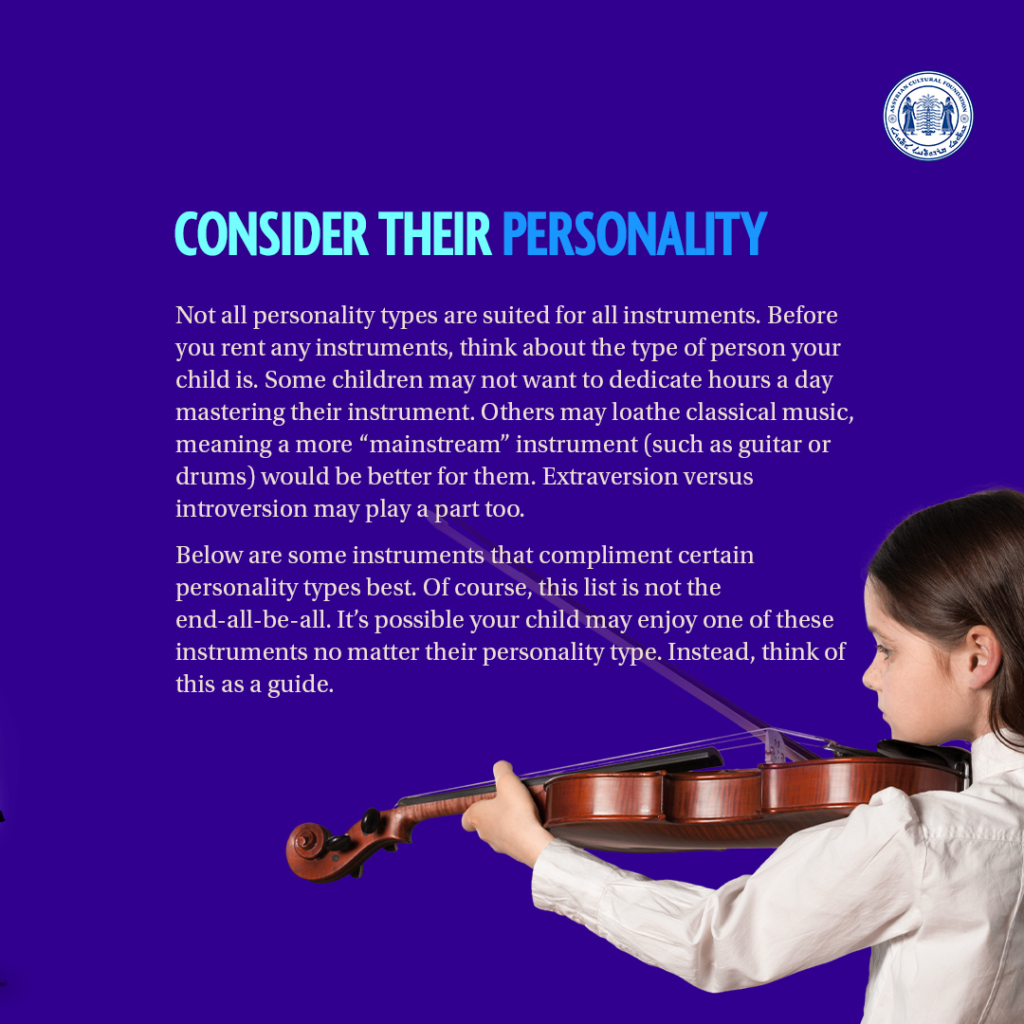
Consider their personality
Not all personality types are suited for all instruments. Before you rent any instruments, think about the type of person your child is. Some children may not want to dedicate hours a day mastering their instrument. Others may loathe classical music, meaning a more “mainstream” instrument (such as guitar or drums) would be better for them. Extraversion versus introversion may play a part too.
Below are some instruments that compliment certain personality types best. Of course, this list is not the end-all-be-all. It’s possible your child may enjoy one of these instruments no matter their personality type. Instead, think of this as a guide.
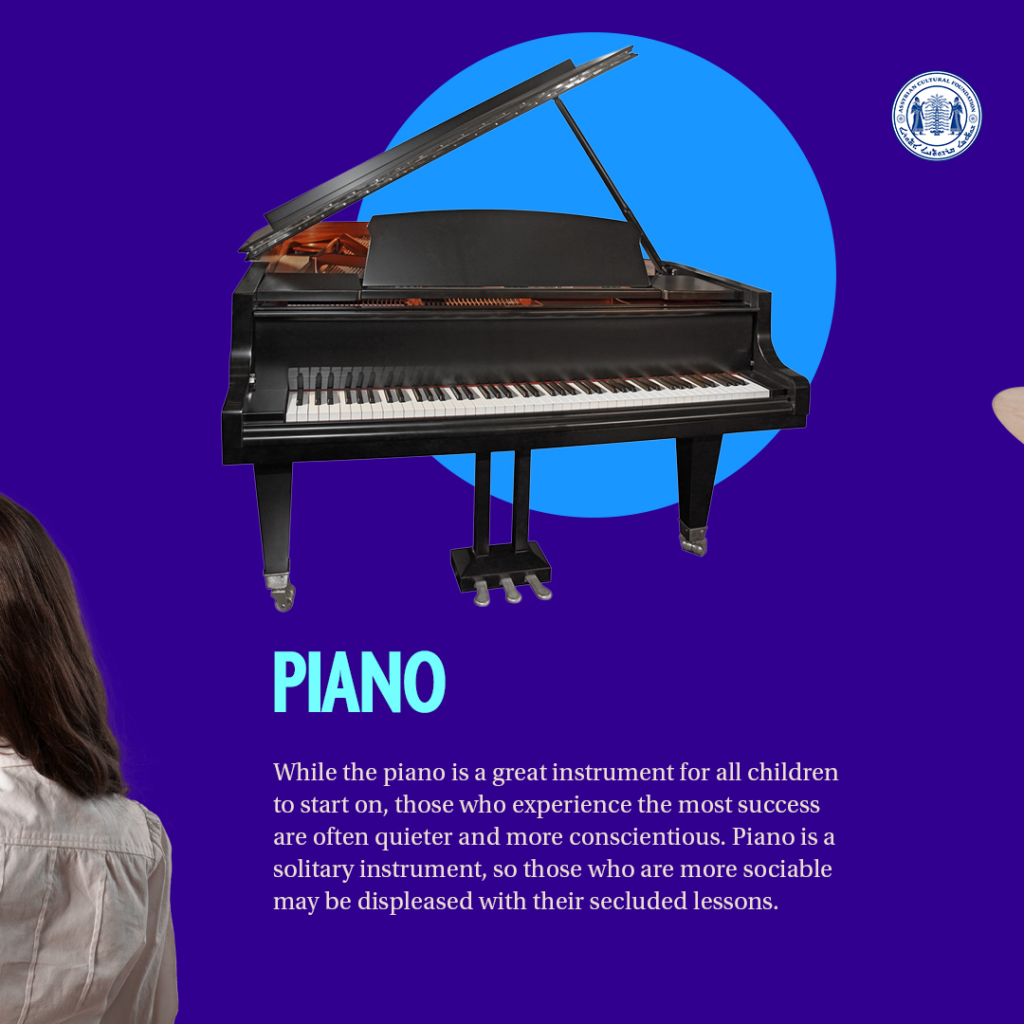
Piano
While the piano is a great instrument for all children to start on, those who experience the most success are often quieter and more conscientious. Piano is a solitary instrument, so those who are more sociable may be displeased with their secluded lessons.
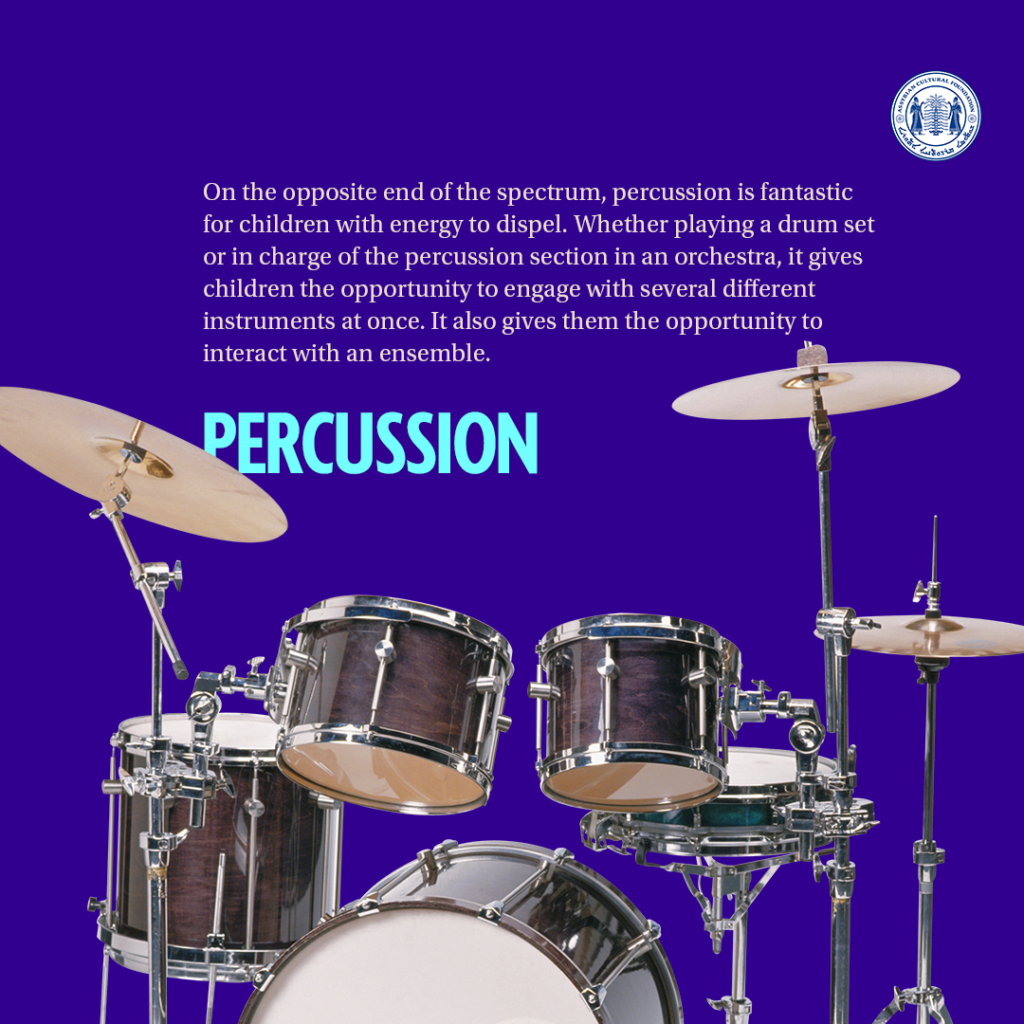
Percussion
On the opposite end of the spectrum, percussion is fantastic for children with energy to dispel. Whether playing a drum set or in charge of the percussion section in an orchestra, it gives children the opportunity to engage with several different instruments at once. It also gives them the opportunity to interact with an ensemble.
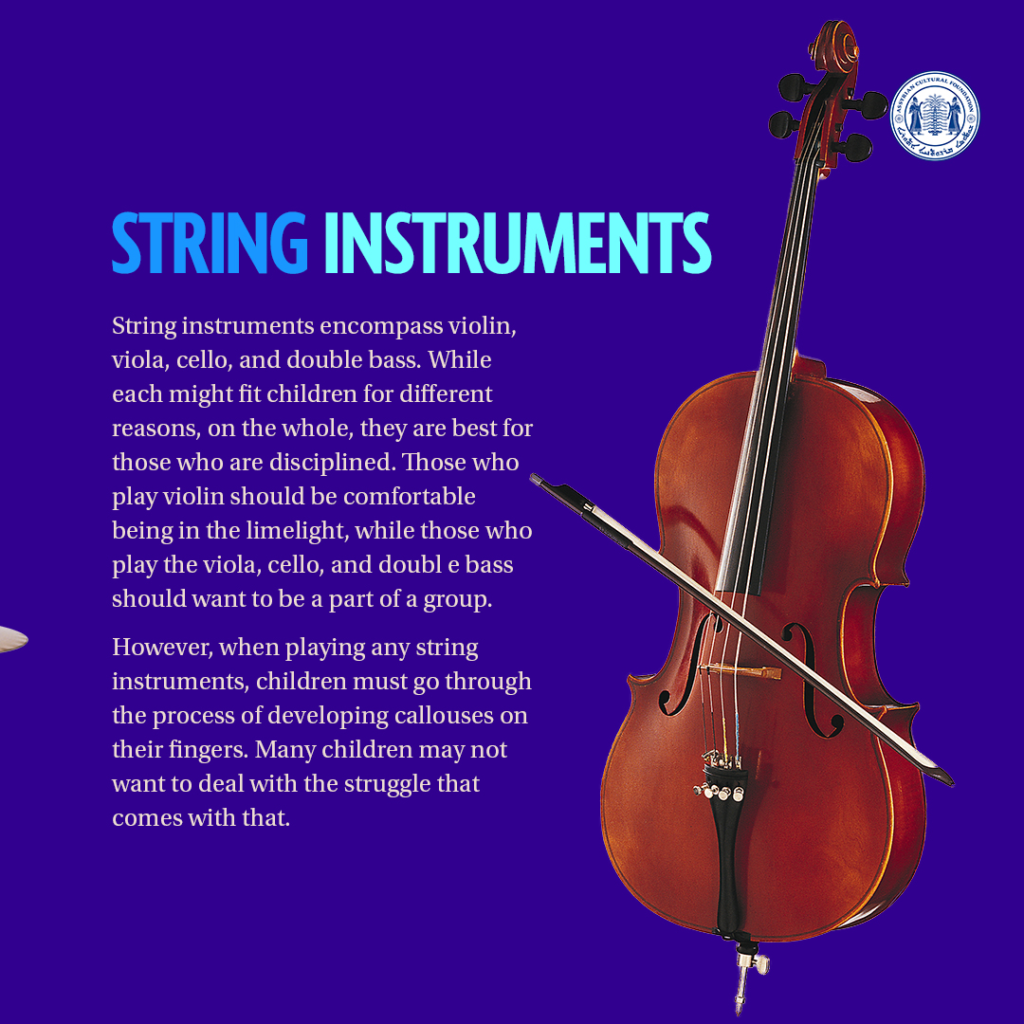
String instruments
String instruments encompass violin, viola, cello, and double bass. While each might fit children for different reasons, on the whole, they are best for those who are disciplined. Those who play violin should be comfortable being in the limelight, while those who play the viola, cello, and double bass should want to be a part of a group.
However, when playing any string instruments, children must go through the process of developing callouses on their fingers. Many children may not want to deal with the struggle that comes with that.
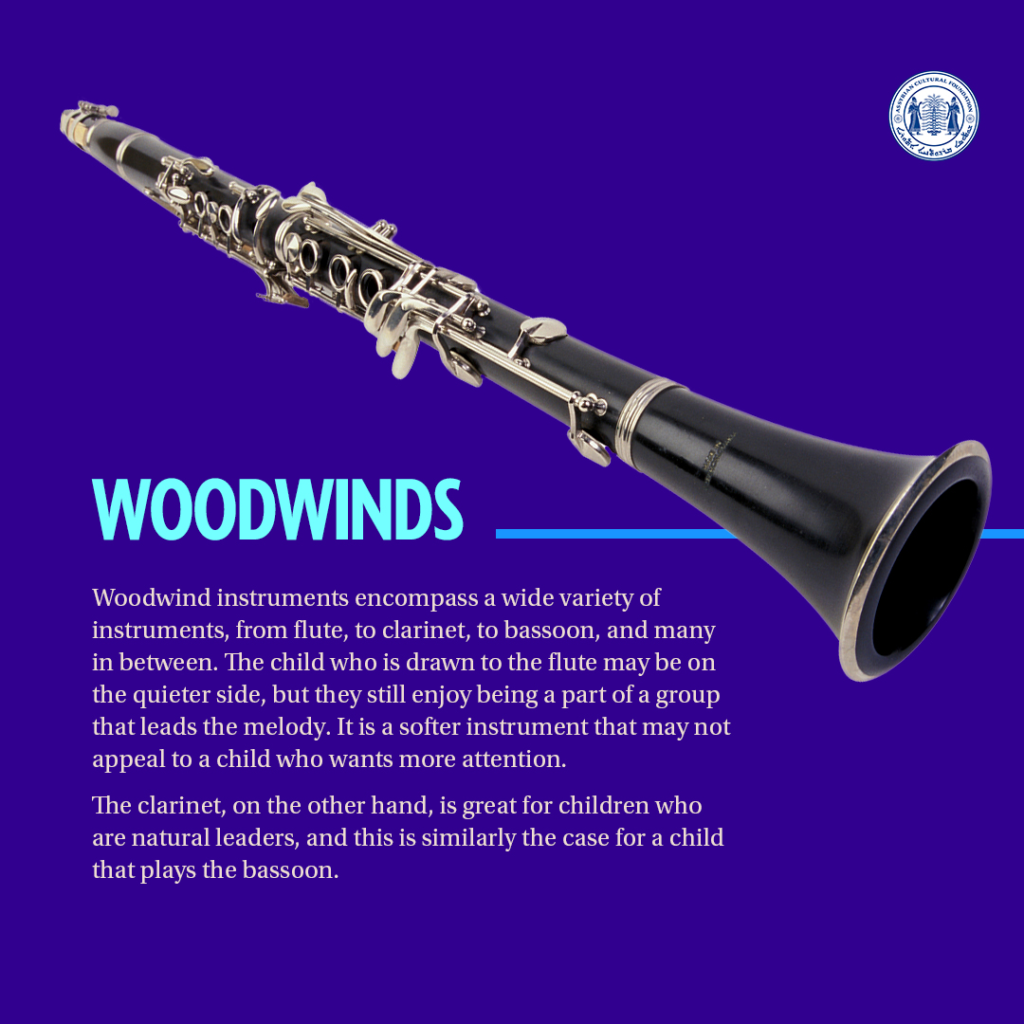
Woodwinds
Woodwind instruments encompass a wide variety of instruments, from flute, to clarinet, to bassoon, and many in between. The child who is drawn to the flute may be on the quieter side, but they still enjoy being a part of a group that leads the melody. It is a softer instrument that may not appeal to a child who wants more attention.
The clarinet, on the other hand, is great for children who are natural leaders, and this is similarly the case for a child that plays the bassoon.
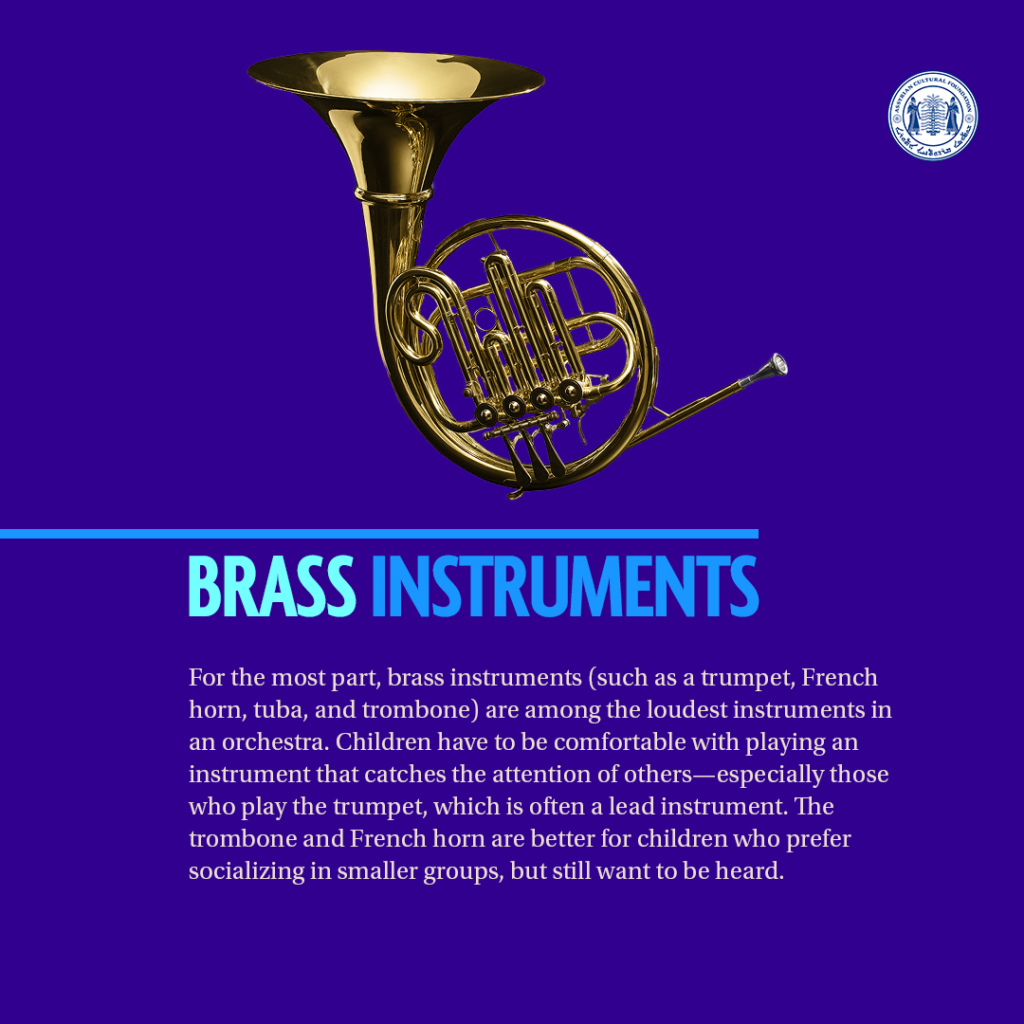
Brass instruments
For the most part, brass instruments (such as a trumpet, French horn, tuba, and trombone) are among the loudest instruments in an orchestra. Children have to be comfortable with playing an instrument that catches the attention of others—especially those who play the trumpet, which is often a lead instrument. The trombone and French horn are better for children who prefer socializing in smaller groups, but still want to be heard.
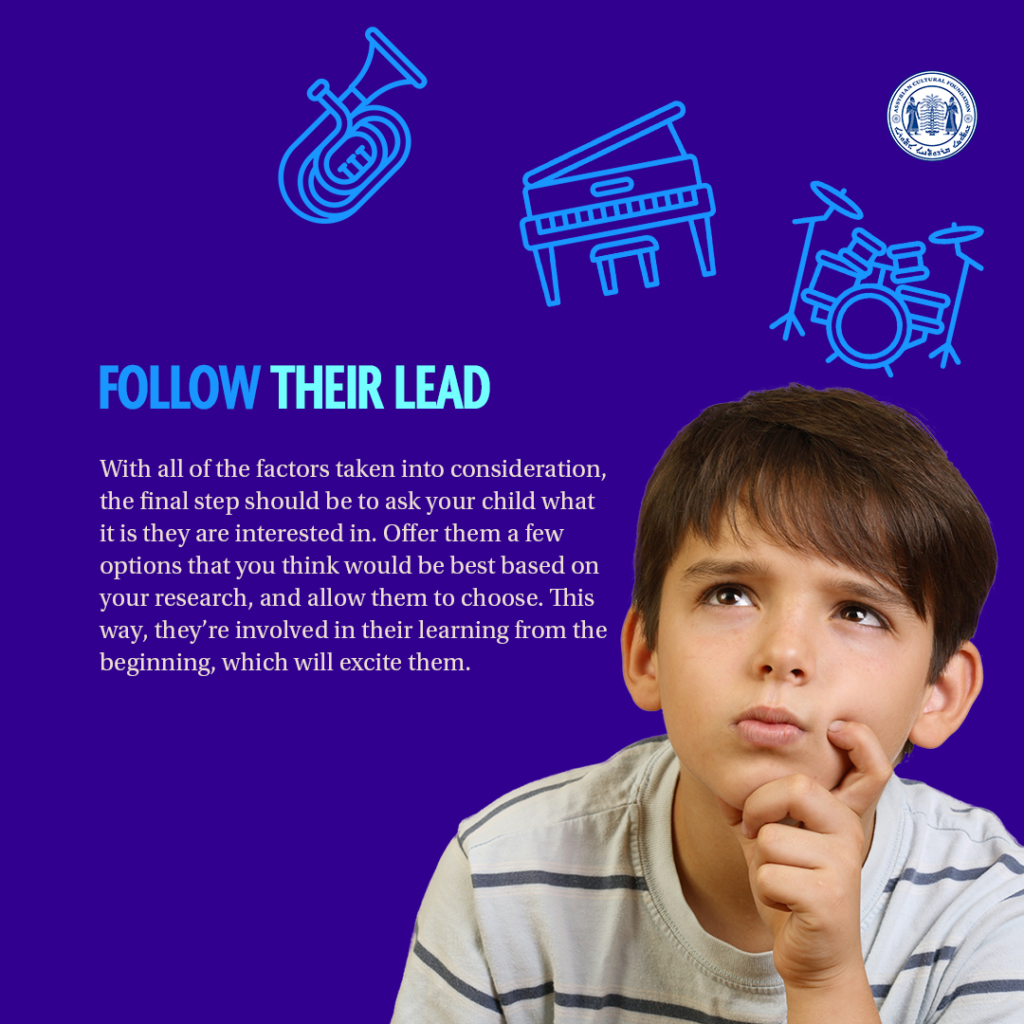
Follow their lead
With all of the above factors taken into consideration, the final step should be to ask your child what it is they are interested in. Offer them a few options that you think would be best based on your research, and allow them to choose. This way, they’re involved in their learning from the beginning, which will excite them.
Written by: Cassandra Ledger
